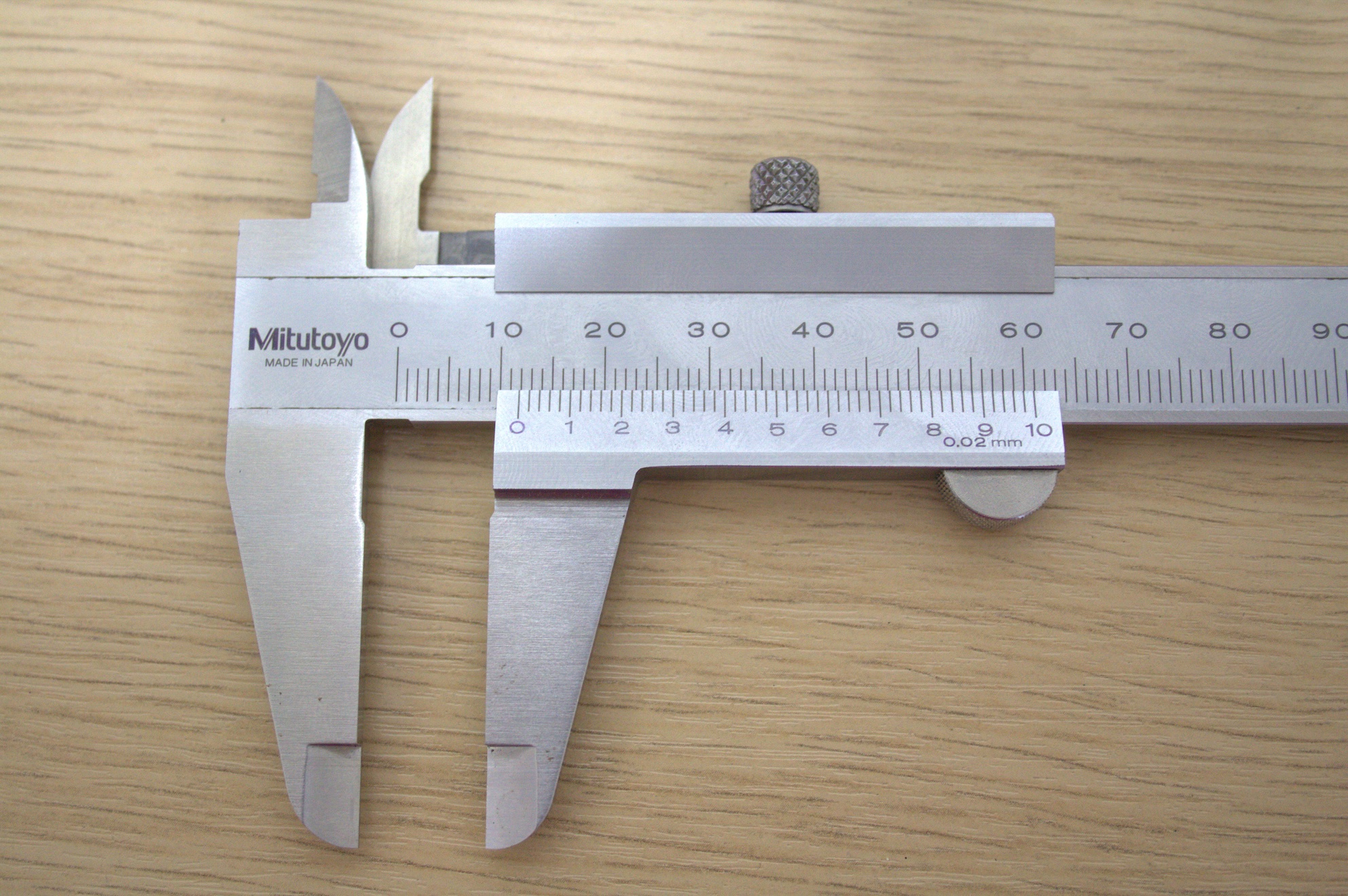Vernier Scales
Introduction
Vernier scales are used in a number of applications, but you will probably come across them in the lab when using callipers, angular vernier scales and travelling microscopes. Vernier Scales allow you to read off a value more precisely than when using an ordinary scale.


Fig. 1: Vernier callipers, marked with a Vernier scale
Reading a Vernier Scale

The Vernier scale which runs next to the main scale, is designed so that ten of its division have the same length as nine of the divisions on the main scale.
In figure 1, the markings on the main scare are at (say) 1mm intervals, while those on the Vernier scale are at 0.9mm intervals. The difference between these sizes tells us what precision the Vernier scale will measure to, in this case 0.1mm. When you take a reading, the Vernier scale will slide along the main scale.
To take a reading:
- Look where the zero mark on the Vernier scale meets the main scale. This gives us our rough reading, between 11mm and 12mm in the example above.
- Now look to find the mark on the Vernier scale which most closely meets a mark on the main scale. In this example we can use the mark at 9 on the Vernier scale. This gives us our value for the most precise digit, so the reading is 11.9mm.


/prod01/prodbucket01/media/durham-university/departments-/physics/teaching-labs/VT2A9034-1998X733.jpeg)